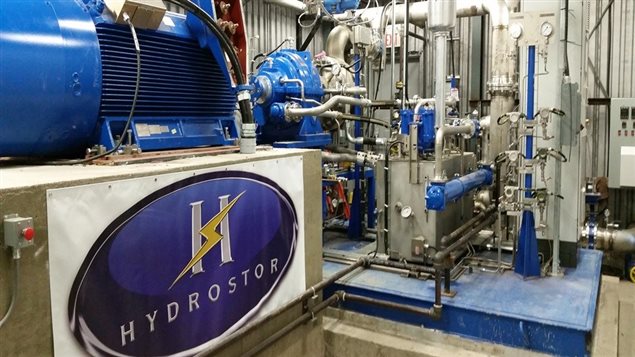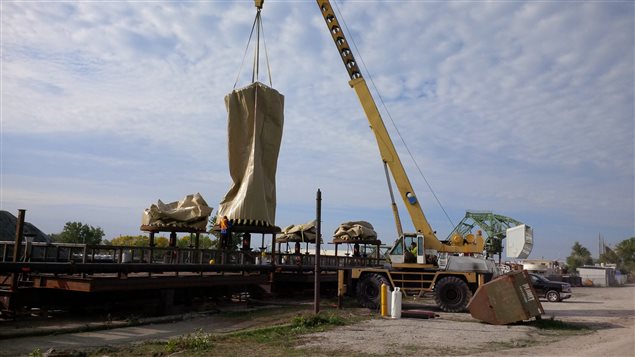Well, not quite electricity, rather potential energy, which was electricity, converted to compressed air, stored in bags underwater, then reconverted to electricity later.
Canada’s largest city, Toronto, is the site for a unique two year energy trial.
Ontario Hydro, in conjunction with a company called Hydrostor, has completed installation of what is claimed as the world’s first large-scale underwater electrical storage system.

The compressors and generators are located in buildings in Toronto, while the underwater storage is about three kilometers out into Lake Ontario, on the lake bottom about 55 metres deep. The testing began today.
In a press release, Hydrostor CEO Curtis Van Wallegham said, “This event marks an important milestone for our company and we’re thrilled to have the world’s first underwater compressed air energy storage system in service. We’re now focused on commercializing this technology globally to bring our green energy storage solution to countries around the world.”

The idea is to use electricity at off-peak hours to run a compressor which converts that energy into compressed air. That in turn is pumped out to massive balloons, made of the same material used by lift bags used in shipwreck and undersea recovery.
The compressed air fills the balloons until electricity is needed. At the point the valve is opened and compressed air is pushed back by the pressure of the water. The air then spins a generator on land which converts the air energy back into electrical energy. The company claims around a 40% loss of energy, which it says keeps it in the range of viability.
One of the major drawbacks to renewable energy has always been the ability to store the energy. Solar for example produces energy during the day, wind turbines only when there is wind. By converting any extra energy into storable compressed air, the energy can be converted back whenever needed.
The current system being tested on a two-year trial can power some 330 homes at its peak.
Hydrostor officials say there are several advantages over storage in lithium batteries for example, such as no loss of potential energy over time, and cost. It can also easily be scaled-up to much larger capacities.
The technology requires only current drilling equipment and basic off-the-shelf technology in compressors generators and the bags themselves.
This large-scale experiment is the result of initial trials carried out off Toronto by company founders, Cameron Lewis and Curtis VanWallegham from 2010 to 2012.
While the company is currently in talks with other locations, such as the island of Aruba, this two-year trial will determine the financial and physical viability
Additional information :CNW, and Richard Blackwell-Globe and Mail







For reasons beyond our control, and for an undetermined period of time, our comment section is now closed. However, our social networks remain open to your contributions.